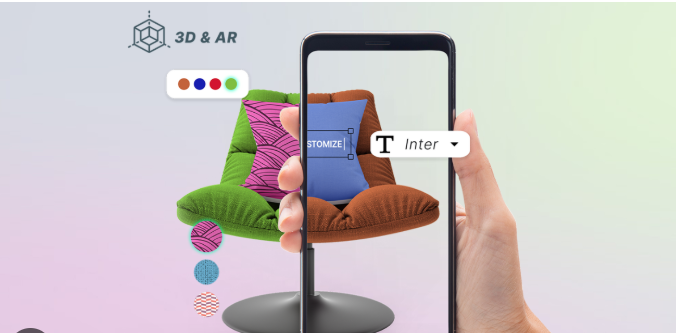Why Every Business Should Consider Implementing 3D Product Configuration

In the digital era, businesses are constantly looking for innovative ways to engage customers, boost sales, and enhance the overall shopping experience. One of the most powerful tools emerging in the marketplace is 3D product configurator software. This technology allows customers to interactively customize products in a 3D environment, offering a more personalized and engaging experience. If you’re wondering whether this technology is right for your business, here are several reasons why you should seriously consider implementing 3D product configuration.
1. Improves Product Visualization and Accuracy
One problem with shopping online is that you can’t touch the items you’re interested in. Customers often face uncertainty about how a product will look or function, leading to hesitations and abandoned carts. With 3D product configurator software, businesses can address this issue by providing customers with a high-quality, detailed, and interactive 3D model of the product. This allows the customer to virtually “touch” and manipulate the product from every angle, making the shopping experience more transparent and accurate.
Businesses can cut down on misunderstandings and customer complaints caused by inaccurate product images by letting customers interact with the product in a virtual area. This results in a higher rate of purchases and fewer returns.
2. Strengthens Brand Identity Through Customization
With the increasing demand for personalization, offering customized products is a great way to differentiate your brand. 3D configurators give customers the power to personalize aspects of a product like color, material, size, and features—allowing them to create a product that truly reflects their style or specific needs. Whether you’re selling furniture, vehicles, or accessories, the ability to design a product that aligns with individual preferences builds a deeper connection between the consumer and the brand.
This sense of ownership and customization strengthens the brand identity and enhances customer loyalty. Brands that embrace personalization through technology can set themselves apart from competitors who only offer one-size-fits-all products.
3. Reduces Decision Fatigue with Interactive Tools
In today’s world, customers are often overwhelmed with too many choices. Decision fatigue can lead to abandonment or hesitation, especially when they don’t have a clear way to visualize their options. 3D product configurator software helps solve this by simplifying the decision-making process. Customers can experiment with different configurations, narrowing down the product to exactly what they want in a matter of seconds.
Instead of feeling lost in a sea of options, customers gain clarity and direction. This leads to faster decision-making, making the entire purchasing process smoother for the consumer. When customers feel empowered to make choices quickly, they are more likely to convert.
4. Increases Customer Engagement and Interaction
Getting customers involved is important for making sales and keeping customers. Traditional e-commerce methods often lack the level of interactivity needed to keep customers engaged. A 3D product configurator invites customers to interact directly with the product, creating a more dynamic and immersive experience. By engaging with the configurator, users spend more time on the site, exploring various features and combinations of the product, which, in turn, increases the likelihood of a purchase.
This higher level of engagement makes people feel more connected to your brand and gives them an experience they’ll remember. It also encourages repeat visits, as customers are more likely to return to see if new configurations or updates have been added.
5. Improves Operational Efficiency and Reduces Errors
Implementing 3D configurator software doesn’t just benefit customers—it also helps businesses improve internal operations. When customers use a configurator to design a product, they generate specific orders based on their configurations, which can then be directly transmitted to the production line or fulfillment team. This reduces the potential for human error that often arises when manually processing custom orders.
Furthermore, with real-time configuration capabilities, businesses can reduce the complexity of managing product inventories, as the software ensures that only the available options and combinations are displayed. This reduces the likelihood of overpromising features or offering non-existent variants, enhancing operational efficiency.
6. Creates Opportunities for Cross-Selling and Upselling
3D configurators present a unique opportunity for businesses to upsell and cross-sell in a subtle, non-intrusive manner. As customers interact with a product, they may be presented with complementary products or upgrades that enhance the configuration. For example, when customizing a car, a 3D configurator might suggest premium wheels, additional features, or accessories that enhance the customer’s personalized model.
These recommendations feel natural and relevant to the customer’s interests, making them more likely to consider purchasing the additional items. In this way, 3D product configurator software can increase the average order value and overall sales.
7. Facilitates Real-Time Collaboration and Sharing
3D configurators also allow for seamless collaboration between customers and sales representatives. With some software, customers can share their configurations directly with a sales associate or even receive assistance in real time. This can be very helpful for businesses that deal with high-end products or real estate, where decisions often need expert help.
Additionally, customers can easily share their configurations on social media, potentially leading to organic marketing and customer referrals. This social aspect of 3D configurators can expand a business’s reach and attract new customers through word-of-mouth.
Conclusion
3D product configurator software has moved beyond a luxury tool and is now an essential asset for businesses looking to enhance the customer experience, improve sales, and increase operational efficiency. Businesses can build brand loyalty, help customers make better decisions, and make shopping more fun by letting customers interact with goods in a more personalized and immersive way. Whether you’re in retail, real estate, automotive, or any other customizable product market, integrating 3D configurators can be a game-changer for your business.







